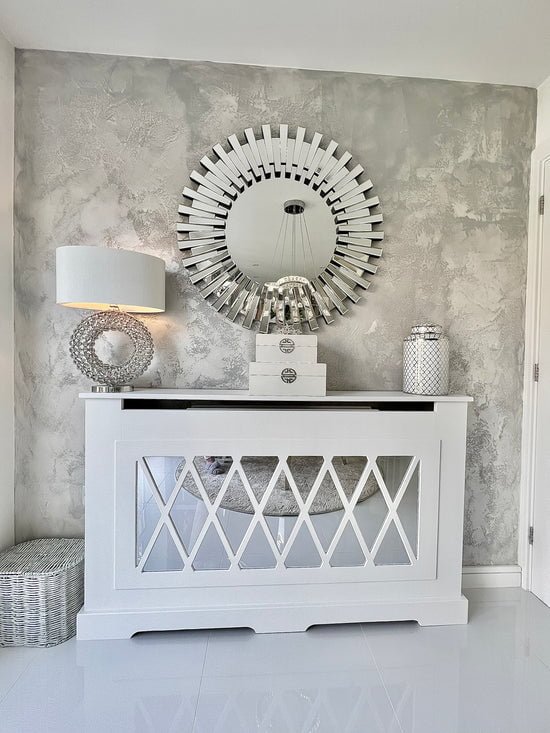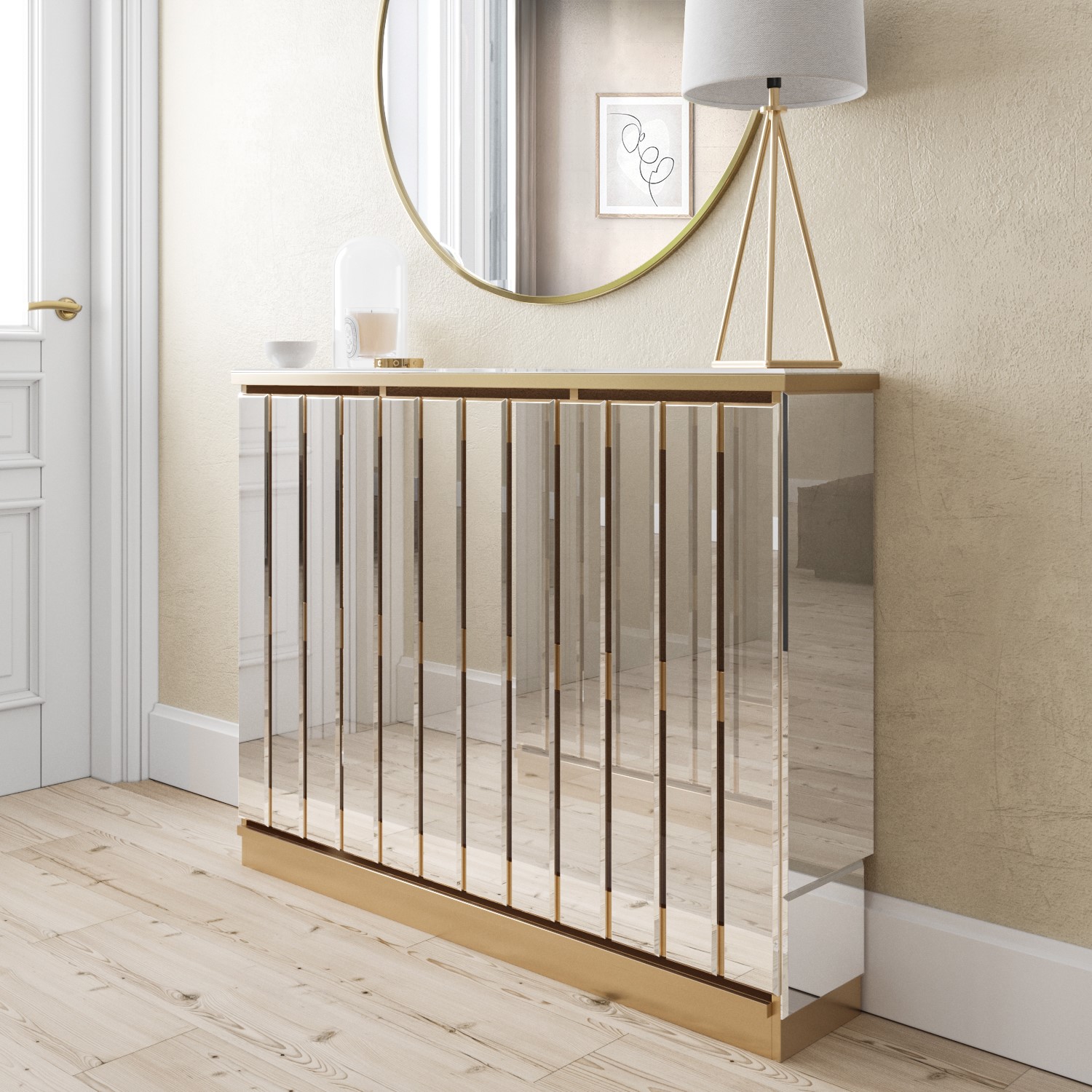DIY Tips for Installing a Radiator Cover effortlessly
Radiator Covers: Comprehending Products, Styles, and Benefits
Radiator covers serve both visual and useful objectives within a home, using a series of products such as steel, wood, and mdf to suit different layout preferences. As styles evolveâEUR" from standard to contemporaryâEUR" these covers not just enhance the visual charm of a room however also contribute to security and power efficiency. However, picking the ideal radiator cover involves comprehending the nuances of products, styles, and their linked benefits. This expedition raises vital questions concerning how these components integrate into your living setting and what factors to consider should lead your selection procedure.
Kinds of Products


Wood covers, typically crafted from woods such as oak or maple, supply a classic, cozy look that matches typical interiors. Their longevity and capability to be stained or painted add to their flexibility. Steel covers, generally made from steel or light weight aluminum, are preferred for their robustness and contemporary appearance, usually featuring smooth lines that boost contemporary areas.
MDF, a produced timber item, is popular for its cost-effectiveness and simplicity of modification. It can be repainted or completed to match existing style while offering a smooth surface area. Plastic covers, while less common, are immune and light-weight to dampness, making them suitable for humid atmospheres.
Inevitably, the selection of material for a radiator cover ought to line up with the house owner's design choices, practical needs, and the particular atmosphere where the cover will be set up. Each product provides a distinctive character, making sure that there is an option to fit every preference and setup.
Popular Layout Styles
Highlighting aesthetic appeal, popular design styles for radiator covers reflect a variety of preferences and interior design patterns. Conventional styles commonly include complex woodwork and elaborate detailing, making them suitable for vintage-inspired or timeless insides. These covers normally integrate carved aspects, giving a cozy and welcoming feeling to any kind of space.
On the other hand, contemporary layouts concentrate on minimalist looks, characterized by tidy lines and downplayed beauty. Products such as steel or sleek timber with a smooth surface are typically used, permitting these covers to blend seamlessly right into contemporary rooms. Industrial styles, on the other hand, embrace basic materials like revealed steel and concrete, including a vibrant declaration to loft space or city settings.
For those seeking a distinct touch, bespoke styles offer modification options that deal with specific choices, enabling home owners to pick colors, patterns, and products that complement their style. Furthermore, farmhouse-style covers incorporate rustic elements, including troubled wood and basic kinds that evoke a relaxing, nation charm.
Benefits of Radiator Covers
Radiator covers not just boost the aesthetic appeal of a space yet additionally offer a number of sensible advantages that make them a beneficial enhancement to any home. One of the primary advantages is safety and security, specifically in households with kids or family pets. Covers reduce the risk of burns from warm radiator surface areas, ensuring a much safer atmosphere.
Furthermore, radiator covers can boost power performance. navigate to this website By routing warmth into the room instead of permitting it to escape, they help maintain a consistent temperature, decreasing heating costs in time. This is particularly beneficial in older homes where radiator systems may be much less reliable.
Another significant advantage is sound reduction. Radiators can often create unwanted sounds during procedure, and covers can aid smother these sounds, adding to a more tranquil living space. Additionally, radiator covers can be functional, providing added storage space or screen space, thereby making best use of the energy of often-overlooked areas.
Lastly, they can protect radiators from dirt and debris, which can prevent performance and boost maintenance demands. With these integrated advantages, radiator covers arise as a useful remedy for improving both the functionality and design of any type of home setting.
Setup Considerations
Installing radiator covers calls for careful factor website here to consider to guarantee both capability and security (Radiator cover). Initially, examine the measurements of your radiator and the surrounding area to make certain an appropriate fit. Exact measurements are critical; an ill-fitting cover can block heat circulation or develop safety threats
Following, examine the material of the cover. While timber offers aesthetic charm, steel options might give better longevity and warm resistance. Take into consideration the weight of the cover as well; larger covers may need added assistance or reinforcements to prevent drooping or damages over time.
Ventilation is one more essential aspect. Covers should include adequate airflow to avoid getting too hot and keep efficient heating. Search for styles with slats or openings that permit warmth to circulate without obstruction.
Additionally, make sure that the cover is firmly placed to avoid accidents, particularly in homes with kids or family pets. Radiator cover. It's advisable to follow the manufacturer's installation guidelines carefully and, if needed, get in touch with a professional for complex installations
Maintenance and Care Tips
Proper maintenance of radiator covers is vital for ensuring their longevity and optimal performance. Normal cleaning is important; dust and particles can gather, blocking air movement and lowering warmth effectiveness. Utilize a soft, damp cloth or a microfiber duster to delicately clean the surface area, staying clear of rough chemicals that might damage the surface. For painted or wood covers, take into consideration a suitable polish or safety finish to maintain their look.
Evaluate the covers regularly for signs of wear see page or damages, such as fractures or peeling off paint. Resolving these problems promptly can protect against additional deterioration. Make certain that the covers are securely attached and check for any kind of loose screws or installations, as vibrations from the radiator can loosen them over time.
In chillier months, avoid putting heavy items or decorative products on top of the radiator covers, as this can hamper warm circulation and cause unneeded stress to the framework. Think about seasonal upkeep by removing the covers for complete cleaning and evaluation throughout warmer months when the home heating system is inactive. Embracing these straightforward care suggestions will certainly boost the efficiency and visual appeal of your radiator covers, ensuring they serve their objective effectively for years to find.

Final Thought
In summary, radiator covers serve as aesthetic and practical improvements to domestic areas. Cautious factor to consider of installation and maintenance additional makes certain the longevity and efficiency of radiator covers in any type of home setting.
Radiator covers serve both visual and useful objectives within a home, offering a variety of materials such as mdf, steel, and hardwood to suit various style choices. Selecting the appropriate radiator cover entails comprehending the subtleties of products, layouts, and their linked advantages.Emphasizing aesthetic appeal, popular design styles for radiator covers reflect a range of tastes and interior design trends.Radiator covers not only enhance the aesthetic charm of an area however additionally provide a number of sensible benefits that make them a beneficial enhancement to any home. Consider the weight of the cover as well; heavier covers might call for additional assistance or supports to stay clear of drooping or damage over time.